Little Shop Of Horrors

Yes, Audrey 2 of Little Shop of Horrors might have been the product of someone’s imagination running away with them, but there is a grain of truth in all that fiction. There are many plants around the world that have adapted methods of obtaining the nutrients needed to grow in poor soils, and some have done so by being carnivorous.
When we see the word ‘carnivorous’ we immediately have a picture of a majestic, frightening lion or similar ‘hunter’ in mind. But for many years it was not believed that plants could be carnivorous, and many early botanical paintings of carnivorous plant species were done without any of the ‘prey’ showing. ‘Carnivorous’ or ‘flesh-eating’ is a bit of a drastic term to use, though, as most carnivorous plants are not bloodthirsty plants that will snap at you like Audrey 2.
These plants are grouped together because of their common habit – using some form of animal matter to get the nitrogen the plant needs to grow. They are not all from the same family and don’t all look similar or work in a similar way. They are all very intriguing, though.
Carnivorous plants come in a range of shapes and sizes: some of the Utricularia and Genlisea species are tiny, while some of the Nepenthes species can produce not only huge traps, but the bulk of the plant can also be unbelievably large. Some plants have passive traps and do not move, while others have active traps, of which the Venus flytrap must be the best known. Because of the wide range of different types and their varying habitats, there is no one-rule-fits-all for carnivorous plants, so it is best to treat them in their groups. For this reason we will look at the types most commonly available in South Africa.
هذه القصة مأخوذة من طبعة November 2017 من The Gardener.
ابدأ النسخة التجريبية المجانية من Magzter GOLD لمدة 7 أيام للوصول إلى آلاف القصص المتميزة المنسقة وأكثر من 9,000 مجلة وصحيفة.
بالفعل مشترك ? تسجيل الدخول
هذه القصة مأخوذة من طبعة November 2017 من The Gardener.
ابدأ النسخة التجريبية المجانية من Magzter GOLD لمدة 7 أيام للوصول إلى آلاف القصص المتميزة المنسقة وأكثر من 9,000 مجلة وصحيفة.
بالفعل مشترك? تسجيل الدخول
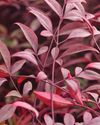
FIRE AND Feathers!
On a dreary winter's day, a screen of fiery and feathery leaves puts up a fight against dullness!
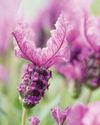
GET THE ladies in!
At this time of year, early-flowering shrubs vie with each other to get the most attention. We say: Trust those with female names for frills and butterflies. They go the extra mile to flower their hearts out.

Vegetable Soups and dumplings
Vegetables make the most delicious soups and classic combinations are always a winner.

Yummy sweet potatoes for your good health
Boiled, baked or braaied, sweet potatoes (Ipomoea batatas) are a delicious and healthy winter comfort food. Just a dollop of butter, a little seasoning and you are good to go.

Pretty and functional
If cooking is your main thing, you would probably be more interested in the culinary value of the three herbs and some of their varieties we are describing.
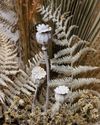
Dried Seedheads & Pods
Autumn and winter are the best times to see what flowers produce the best seedheads that can be left on the plants to feed the birds and bugs and for harvesting for dried arrangements.
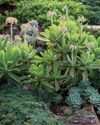
SO MANY FACES and so many choices...
Whoever associated a Cotyledon orbiculata (pig's ear) with the ear of a pig obviously did not know about all the varieties and cultivars this species in the genus Cotyledon has.

COLOURFUL Cold Weather WINNERS!
If it comes to a vote, these dependable shrubs will be the top candidates for prime performance in winter and in other seasons...
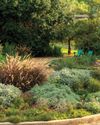
What makes a garden sustainable?
It is interesting to note that the United Nations defines sustainable development as: “development that meets the needs of the present without compromising the ability of future generations to meet their own needs”.

Nurturing NATURE-The Story of Kraal Garden's Transformation
Nestled within Prince Albert's rustic embrace lies a gem that is a testament to the transformative power of human vision and nature's bounty.